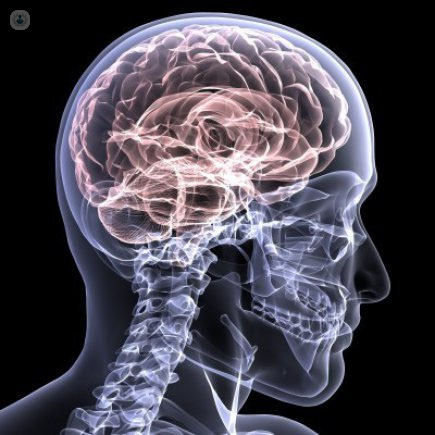


In the field of neurology, specialists have developed a wide range of treatments to treat conditions such as dementia, Parkinson’s disease, epilepsy, motor neuron syndrome, tumours in the head or spine, or brain trauma. The precise combination of treatments depends on the condition that a patient has, but collectively, the main types of treatment are as follows:
- Medication – researchers have developed a wide array of medication to combat the symptoms of various neurological disorders. With medication, we can slow down Alzheimer’s disease, manage the symptoms of epilepsy, and help patients with Parkinsons’ regain control over their movements. Painkiller medication can be particularly helpful for people suffering from nerve pain due to a tumour or injury. However, we do not yet have medication that can cure neurological conditions such as dementia or Parkinson’s.
- Physiotherapy and occupational therapy – patients living with a movement disorder can benefit from physiotherapy to help build their strength and mobility in spite of neurological barriers, and occupational therapy to come up with new strategies for accomplishing day-to-day tasks. The patient is unlikely to fully restore their movement, but this kind of treatment can help prevent their condition from getting in the way of daily life.
- Speech and language therapy – some neurological disorders such as dementia, Parkinson’s, and stroke, can make eating, swallowing and even breathing more difficult. A speech and language therapist can support the patient to maintain control over these functions.
- Surgery – some conditions such as a brain tumour, spinal tumour, or spinal stenosis, can press on the nerves and pose a significant risk to someone’s ability to move. In extreme cases, nerve damage can cause someone to lose function over their bowels, or become completely paralysed. To prevent this outcome surgery may be necessary to remove the tumour or decompress the spine.
- Deep brain simulation – a deep brain simulator is like a pacemaker for the brain. It sends out signals within the brain to interrupt other signals that may be causing neurological symptoms such as tremor or stiffness. The deep brain simulator is implanted with a surgical procedure and remains in the brain for a number of years. This is a relatively early treatment compared to other treatments in the field of neurology, and its potential applications are not yet fully known.
Treatment is constantly evolving and in the future neurologists are likely to have a better understanding of how to tackle abnormal signals and manage symptoms more effectively. Surgery is likely to be less invasive and more effective at removing tumours without damaging the nearby nerves. In addition, more work needs to be done in identifying the root causes of neurological disorders.
What is the aim of neurological treatment?
If you are diagnosed with a long-term neurological condition, treatment aims to manage the symptoms and slow down the condition’s progression.
If, however, you have suffered an injury, the aim of treatment will be to restore your abilities as much as possible. This kind of treatment program is known as neurorehabilitation.
What kind of specialist provides neurological treatments?
If you have a neurological condition the main specialist overseeing your care will be a neurologist, and they will be able to prescribe you medication where needed. Depending on other treatment you need, you may also come into contact with the following specialists:
